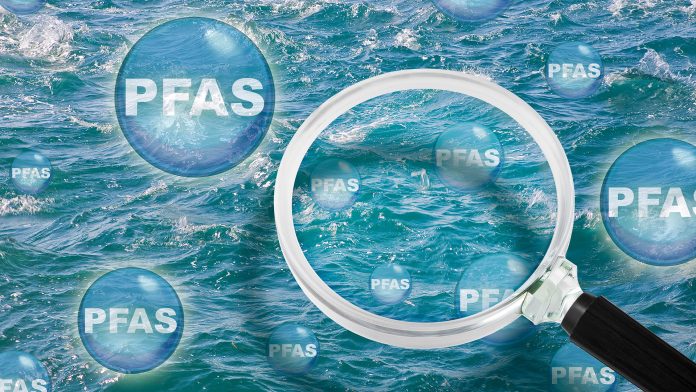Indiana University research suggests that precipitation is contaminating all five of the Great Lakes with PFAS pollution.
Perfluoroalkyl and polyfluoroalkyl substances (PFAS), commonly known as forever chemicals, are harmful pollutants persistent in the air, water and soil.
New findings have identified that PFAS is raining down on all of the Great Lakes: Superior, Michigan, Huron, Erie, and Ontario.
This is particularly concerning, as the Great Lakes are a major freshwater resource for the US and Canada, with the surrounding basin home to 10% and 30% of each country’s population, respectively.
Dangers of PFAS
PFAS are synthetic chemicals found in various consumer products. These forever chemicals are highly persistent in the environment and human body, leading to potential health risks.
PFAS exposure has been linked to numerous health issues, including cancer, liver damage, thyroid disease, and developmental problems in children.
Due to their widespread use and resistance to degradation, PFAS pose a significant challenge to public health and environmental safety.
In April, the US Environmental Protection Agency (EPA) classified two forever chemicals (PFOS and PFOA) as hazardous substances and introduced limits on their concentrations in drinking water.
Understanding the scale of PFAS contamination in the Great Lakes is pivotal for ensuring environmental and human health.
Analysing forever chemicals in the Great Lakes
The researchers acquired 207 precipitation samples and 60 air samples from five sites surrounding the Great Lakes in the US (Chicago, Cleveland, Sturgeon Point, Eagle Harbor, and Sleeping Bear Dunes) between 2021 and 2022.
Additionally, the team collected 87 water samples from the five Great Lakes and analysed them for PFAS pollution.

Scope of contamination
PFAS concentrations across precipitation samples were consistent, indicating similar levels regardless of population density.
Cleveland exhibited the highest median PFAS concentration, while Sleeping Bear Dunes recorded the lowest, suggesting a correlation between population density and airborne PFAS.
PFAS concentration was highest in Lake Ontario, followed by Lake Michigan, Lake Erie, Lake Huron, and Lake Superior.
While PFOS and PFOA concentrations in lake water have decreased since 2005, PFBA levels remained high, signalling the need for enhanced regulatory efforts.
The findings suggest that airborne deposition from precipitation primarily introduces PFAS into lakes, with removal occurring through sedimentation or outflow via connecting channels.
Northern lakes (Superior, Michigan, Huron) generally accumulate PFAS, while Lake Ontario tends to eliminate them. Lake Erie maintains steady levels.
These findings could inform future policies and actions aimed at mitigating PFAS pollution in the Great Lakes, emphasising the importance of continued monitoring and regulatory measures.





